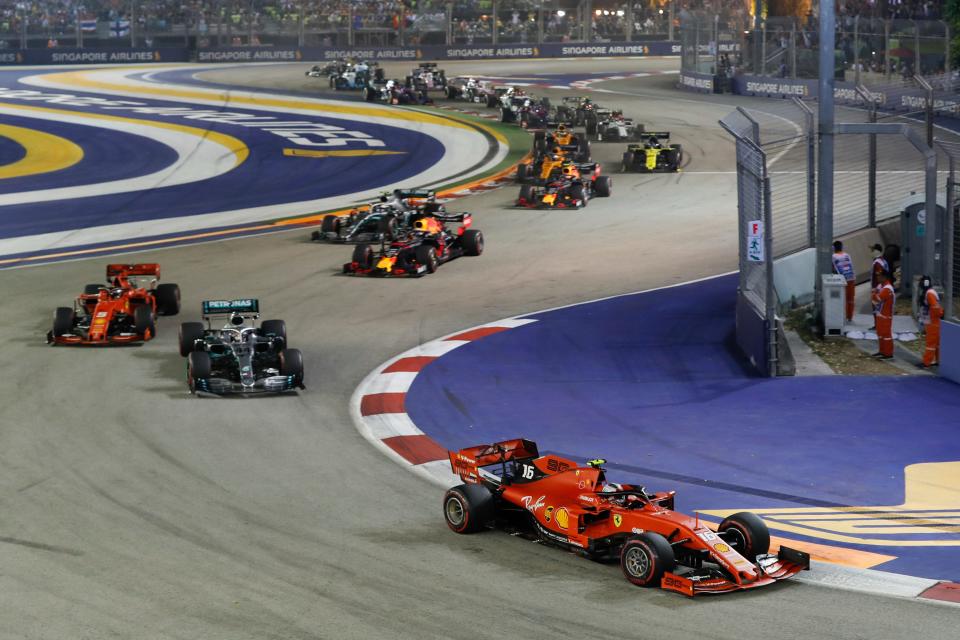KEN WILLIS: As Formula One interest grows in U.S., a history lesson
Caught the Formula One bug yet?
All the cool kids are on board, so why not join the crowd?
Here’s one example of how hot F1 is these days: Tickets for this week’s inaugural Miami Grand Prix, through StubHub, start at $500 for general admission.
Yes, start. And yes, general admission. That’s generally expensive.

After a few decades of hit-and-miss, F1 isn’t just back in the United States (Austin has been a host city since 2012) but this year adds Miami and next year adds Las Vegas. All of this coincides with an increase in F1’s American TV audience, and no one adds more horsepower to momentum than Mr. Nielsen.
THE INTIMIDATOR: On the 71st anniversary of Dale Earnhardt's birth, 71 memories
DOWN & DIRTY: NASCAR's 2022 TV roll continued at Bristol, and now comes Talladega
It’s convenient and easy to suggest much or most of this momentum is triggered by one of the hottest documentaries in TV history — Netflix’s “Drive to Survive,” which for the past four seasons has taken viewers behind the scenes and into the cockpits of racing’s most expensive and well-traveled league.
A well-crafted production featuring handsome racers, multi-million-dollar equipment and sexy worldwide destinations . . . never underestimate the pull of such things.
But is that pull creating too much push right now? Adding a second U.S. race this year and a third in 2023 seems rather aggressive, and if you’re a student of such things, you can’t help but recall another juggernaut, two decades ago, pinning back its ears and mashing the gas.
Through the 1990s, NASCAR built on its 1980s momentum and all of the collective momentum built even more, feeding upon itself in a manner that led to the first wall-to-wall network TV contract beginning in 2001, and we all remember how that debut went.
For all the tragedy surrounding Dale Earnhardt’s death in the ’01 Daytona 500, two facts about its aftermath are undeniable. First and most importantly, it triggered the safety revolution — NASCAR’s Manhattan Project included fast results (HANS Device, SAFER Barrier) as well as long-range programs that continue today.
Also, in the days and months after Feb. 18, 2001, NASCAR’s audience grew to unprecedented levels. The Earnhardt tragedy put NASCAR on the cover of news magazines and in the opening moments of network newscasts. TV ratings soared and every month or so — or so it seemed — another major track was announcing the addition of more grandstand seating.
The overall numbers were much bigger than F1’s current inflation, but NASCAR had a wider U.S. base from which to launch. The reason(s) behind NASCAR’s early-2000s growth and F1’s current trajectory are obviously different, but you can’t help but get a whiff of that familiar buzz.
NASCAR’s numbers eventually leveled off and began tilting in the wrong direction for several years. The reasons . . . well, it depended on who you asked, but there were a wide range of alleged culprits. A big one, however, was perception.
The non-fans and casual fans who were suddenly tuning in learned that Sunday’s races didn’t always look like Saturday’s commercials promised. Many races were, and are, tedious. Occasionally tedious only at times, but sometimes a bit tedious from green to checkers. That’s racin’, you know.
Grabbing an audience leads to the effort to hold an audience. And that’s where Formula One is right now.
You want to talk tedious? Longtime F1 viewers grew accustomed to a race’s outcome often — quite often, actually — being decided in the opening turn. If the pole-sitter got the proper jump and skated away unharmed through the first turn, the race was probably over.
Not sure if the F1 rulers studied such recent NASCAR history, but they have sure tried to remedy that problem before it rolls around and fully bores a new audience. Many have surely learned by now that the racing product usually doesn’t pack the same drama delivered by Netflix’s editors.
Aerodynamic changes leading into this season were designed to increase competition — i.e. more passing. It’s too early to give a decisive verdict, but at least they’re cognizant of the challenge of holding an American audience.
If you read the history of the U.S. Grand Prix, you’ll learn F1 has a hot-and-cold relationship with North America. Right now, it’s hot. Might get hotter, might not.
Sooner than later, the product has to produce, or else you get comfortable under the large tent of American niche sports. If they fall short, they'll still have that enormous international audience.
And Netflix, of course.
— Reach Ken Willis at ken.willis@news-jrnl.com
This article originally appeared on The Daytona Beach News-Journal: F1 gaining American interest; NASCAR offers a lesson in next challenge

